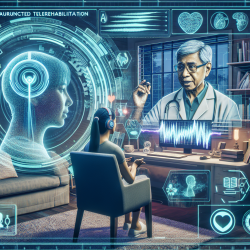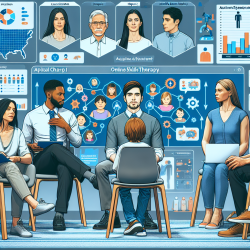As practitioners in the field of speech-language pathology, we are constantly seeking innovative methods to enhance the efficacy and accessibility of our services. A recent study, "Technical Features, Feasibility, and Acceptability of Augmented Telerehabilitation in Post-stroke Aphasia: Experiences From a Randomized Controlled Trial," sheds light on a promising approach: augmented telerehabilitation.
What is Augmented Telerehabilitation?
Augmented telerehabilitation leverages videoconferencing technology to deliver speech and language therapy to individuals with aphasia following a stroke. This model not only addresses geographical barriers but also augments the intensity of therapy, which is crucial for effective rehabilitation.
Key Findings from the Study
- High Feasibility: The study found that telerehabilitation is a feasible option for delivering speech therapy, with a tolerable technical fault rate. The majority of participants experienced zero to three faults during their sessions.
- High Acceptability: Satisfaction levels were high among both participants and speech-language pathologists. 93.1% of participants rated their experience as good or very good.
- Technical Setup: The study used a portable PC setup with videoconferencing software and remote-control capabilities to ensure ease of use and address technical issues promptly.
- Privacy and Security: Adequate measures were implemented to ensure data protection and confidentiality, making the model secure for clinical use.
Implications for Practitioners
For practitioners, these findings highlight the potential of telerehabilitation to enhance therapy outcomes and accessibility. Here are some steps to consider for implementation:
- Technical Preparation: Ensure a stable internet connection and familiarize yourself with the videoconferencing software and remote-control tools.
- Training: Provide comprehensive training for both therapists and participants to maximize the effectiveness of the telerehabilitation sessions.
- Monitoring: Keep a log of technical issues and satisfaction levels to continually improve the service.
Encouragement for Further Research
While this study provides a robust framework, further research is essential to explore the long-term efficacy and potential improvements in telerehabilitation methods. Practitioners are encouraged to participate in or conduct their own studies to contribute to this evolving field.
To read the original research paper, please follow this link: Technical Features, Feasibility, and Acceptability of Augmented Telerehabilitation in Post-stroke Aphasia: Experiences From a Randomized Controlled Trial










